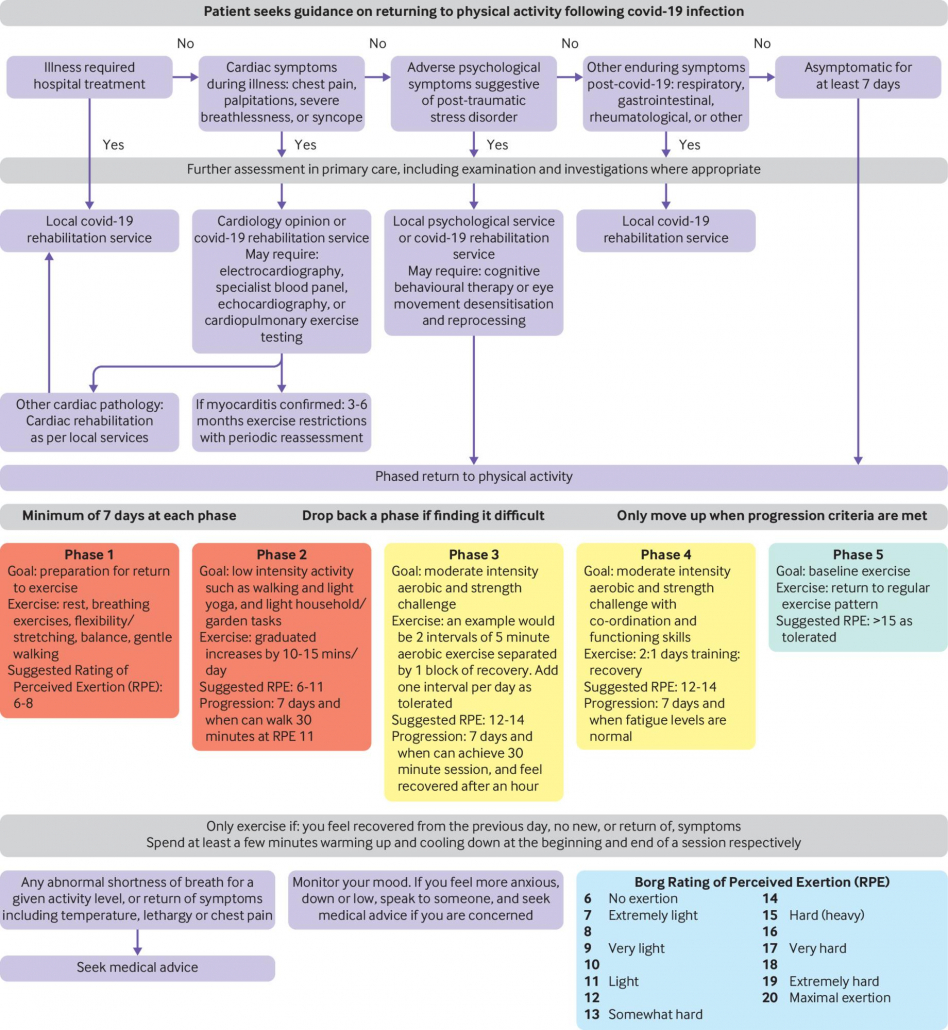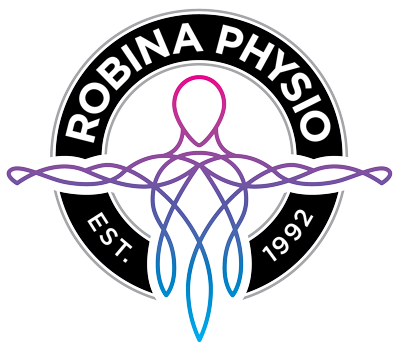Exercise After COVID
Exercise After COVID
By Aaron Woolley, Physiotherapist.
COVID-19 has officially hit Queensland and it appears it will only be a matter of time before coronavirus becomes an endemic disease within Australia. With the recent influx of the virus I have treated many patients who contracted COVID, thankfully recovered well and now looking to get back into the normal activities/exercises they performed pre-COVID. The majority of these people have been surprised by how hard it has been for them to get back into exercise after COVID. Interestingly, this complaint is occurring consistently despite illness severity and is affecting people who suffered both mild and moderate to severe symptoms.
Typical with the Coronavirus pandemic is a lack of clear evidence to guide medical decision making, returning to exercise is no different at this stage. But based on what little evidence is available and using some principles used for other respiratory illnesses I have written you all some advice to help guide you slowly and carefully back into exercising.
How do I know if I am ready to return to exercise?
It is very important that a one size fits all approach is not taken here. Everyone experiences coronavirus differently, meaning that the risks of returning to physical activity have to be managed for each individual. Due to the fact that the deterioration of symptoms that signify a severe infection occurs roughly a week from symptom onset, a consensus is that exercise or sporting activity should only be resumed after an asymptomatic period of 7 days.
The second factor that needs to be considered is the possibly of the person having “Long COVID”. If an individual is experiencing ongoing symptoms (regardless of body system) following the acute phase they should seek medical attention before starting exercise again. This is important because there is a risk of cardiac complication and thromboembolic events related to COVID-19, especially in those who required hospital treatment. If you had mild symptoms but they included signs of a myocardial injury such as chest pain, severe breathlessness, palpitations and fainting then you should have a medical assessment before starting physical activity.
The third factor to consider when deciding to exercise after COVID is ongoing respiratory symptoms. It is expected that these symptoms including breathlessness and coughing will subside after several weeks. But if these symptoms are not resolving as expected or even worsening, that could be a sign of pulmonary-vascular complications such as a pulmonary embolism or pneumonia. If this sounds like you then please seek medical attention before trying to exercise.
The final thing to consider is the psychological aspect of recovering from COVID-19. Physical activity has been shown to be incredibly affective at managing mental health conditions, but if you are struggling with your mental health post coronavirus your medical professional can help you access other support systems as well. And keep in mind if you don’t have the motivation to start physical activity just yet it’s probably not worth the stress of trying to force it, you can start when you’re feeling ready cause exercise isn’t going anywhere.

https://www.bmj.com/content/372/bmj.m4721
When trying to decide if you’re ready to start exercise after COVID, you can guide your decision with the information above. But most importantly if you’re unsure or concerned speak to your doctor first or check in with us at Robina Physio on the Gold Coast. A quick check up can make all the difference.
How Do I Get Back into Exercise?
So, you have accessed your risk factors, been cleared by your doctor and ready to start but not quite sure how? This next part is for you. Please keep in mind that there still isn’t clear evidence to guide us yet so this information may change in the future.
The plan is broken into 4 phases, each lasting 7 days but only go to the next phase when you feel ready. But firstly, its important you assess your baseline activity/fitness pre-COVID. For example, if you struggled to walk 5km before, aiming to walk 5km immediately post is probably not going to end well. Next its important you set goals and consider how you will monitor your progress. If you feel stuck writing SMART goals check out my previous blog HERE.
Phase 1.
- Spend at least 7 days here
- Very Light Intensity. You should be able to hold a full conversation without difficulty.
- Aim to keep your heart rate below 100-110bpm
- Aim for 10-20 minutes per day
- Good activities for this stage include:
- Light housework and gardening
- Gentle walking
- Stretching inc gentle Yoga and Pilates
- Very light body weight strengthening type exercises
Phase 2.
- Spend another 7 days here. (Phase 1 and 2 combined = 14 days)
- Light intensity activity. Can still hold a conversation but only have slightly laboured breathing
- Can work heart rate up to a maximum of 120bpm
- Increase to 20-30 minutes per day
- Keep the same activities as in Phase 1
- You should feel like you can perform this type of activity on back to back days
- You should NOT feel tired after exercising. If you do then you’re likely pushing too hard
Phase 3.
- The next 2 stages are highly dependent on your pre-illness fitness levels
- 7 days in this Phase. But some may require up to 14 days here
- Build the intensity slightly. You should be slightly out of breath but able to hold a conversation. E.g. need a breath after 5-6 words
- Heart rate up to 120-130bpm
- Aim for up to 45 minutes per day
- Exercise should not feel hard. This is moderate level exercise
- If it takes longer than 1 hour to feel recovered then you went too hard
- Activities you could do include:
- Brisk walking, including hills/stairs
- Jogging
- Swimming
- Cycling
- Light-weight compound exercises (ensure adequate rest between sets)
- Moderate intensity household work and gardening (e.g. digging)
- Golf
Phase 4.
- This phase builds intensity once again and adds more complex sessions including circuits and/or intervals
- 7 days in duration
- High end moderate intensity but not considered hard yet
- Noticeably puffing but still able to talk (3-4 words at a time)
- Heart rate up to 140bpm and beyond depending on previous fitness level
- Should be able to recover quickly. Exercising should not have an impact on your normal daily activities
- By the end of this stage you may still not have returned to your pre-COVID fitness
- Add activities such as:
- Running including speed and change of direction work
- Body weight circuits
- Super-setting gym programs
- Intervals (e.g. 30 sec on / 30 sec off)
- Moderate resistance exercises including free weights
- Tennis

If at any stage you feel a phase is too hard or have a set-back including worsening fatigue and/or a return of symptoms revert to the previous stage until fully recovered and I would recommend seeking medical attention.
I hope you found this guide helpful and get back into exercise after COVID. If you need further assistance the Physio’s at Robina Physiotherapy on the Gold Coast are here to help. Contact us on (07) 5578 7233 or BOOK ONLINE.
Resources
https://www.bmj.com/content/372/bmj.m4721



